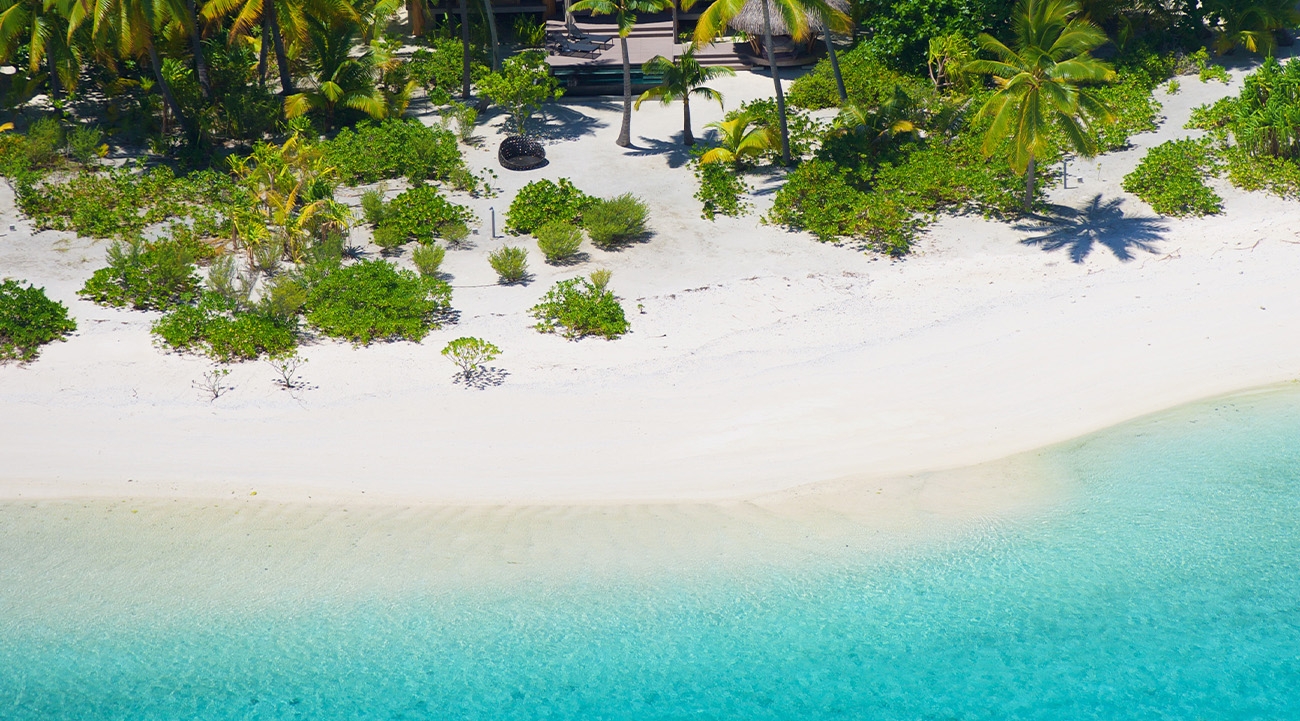Treasure Islands: Exploring some of French Polynesia's most exclusive private isles
That’s where Brando used to come to get into character for Apocalypse Now,” says our guide Herehia, pointing to a lake in the middle of a field cut through by sprouting palms. “His granddaughter told me he’d spend the day staring over the water, trying to go crazy.” I’m touring Rimatu. “It’s a very special place,” Herehia tells us.
This is an island that went from being a sacred hideaway for Polynesian royalty to being a Canadian-owned coconut plantation and then to being the home of Hollywood actor Marlon Brando. It’s part of the Tetiaroa Atoll, a cluster of 13 turquoise-ringed islets in the heart of French Polynesia. Brando came here in the 1960s while filming in Tahiti and fell in love with it – so much so that he spent two years trying to buy it.
He eventually succeeded, acquiring a 99-year-lease over the entire atoll, which his family still own. It's not hard to see what lured him. The setting is the stuff of fiction: white-sand shores glimmering beneath azure skies; palm forests dappled with flecks of sun; and cerulean water so clear you could put a straw in and swig from it.
Hollywood hideaway
I’m visiting Rimatu during a stay at The Brando, the eco-retreat dreamt up by Brando himself and the brainchild of hotel developer Richard Bailey, who opened the resort in Tetiaroa in 2014 (10 years after the actor’s death). It has since become one of the world’s most exclusive hideaways, attracting the likes of Barack Obama, Oprah Winfrey, Leonardo DiCaprio and Kim Kardashian to its shores.
It’s easy to see why. Paradise views aside, there’s a focus on culture, history and ecology here that goes beyond just flying and flopping. The next day, I find myself cycling around the atoll’s archaeological sites in the company of an expert naturalist, who points out the remnants of temples once used for sacred rituals by Tahitian chiefs.
Then I snorkel my way through the coral garden, an otherworldly universe where rainbow-hued fish dart between coral formations so colourful they look Photoshopped.
I spend hours each day gazing out over the lagoon – a stretch of sparkling turquoise peppered with patches of sapphire – feeling like I’ve stumbled upon a secret castaway isle. It’s utterly mesmerising.
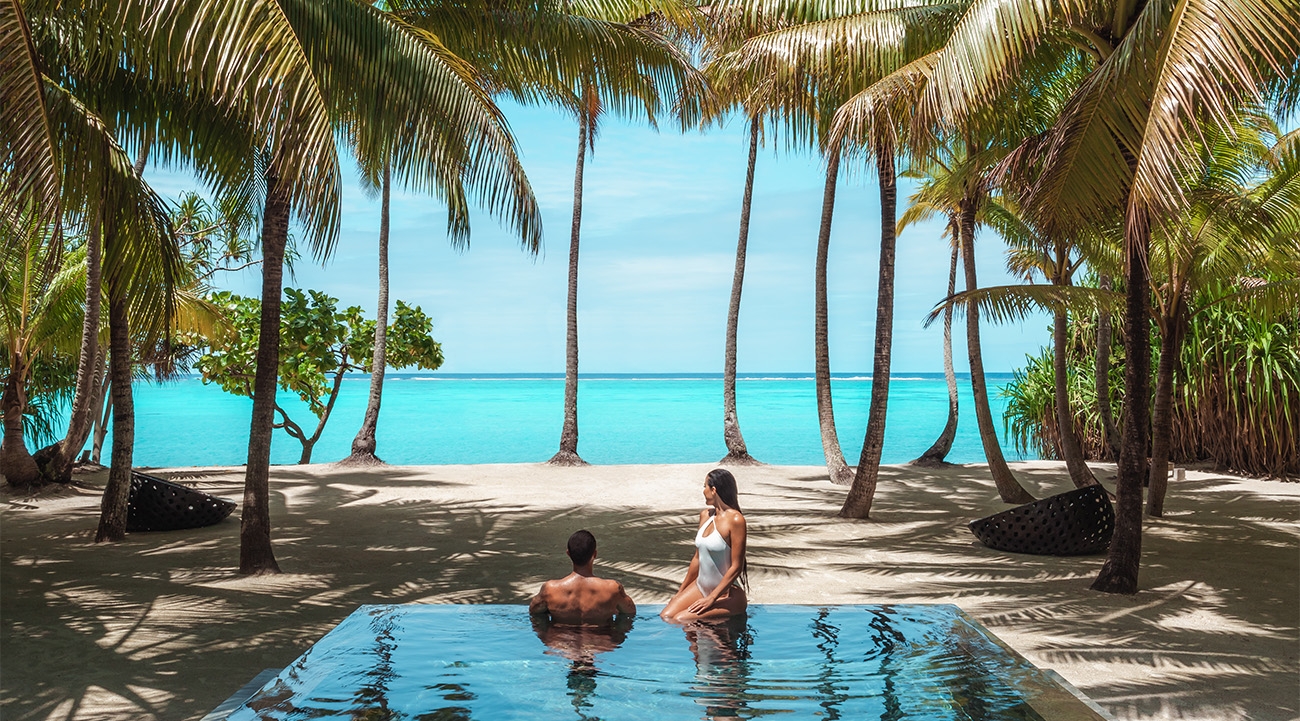

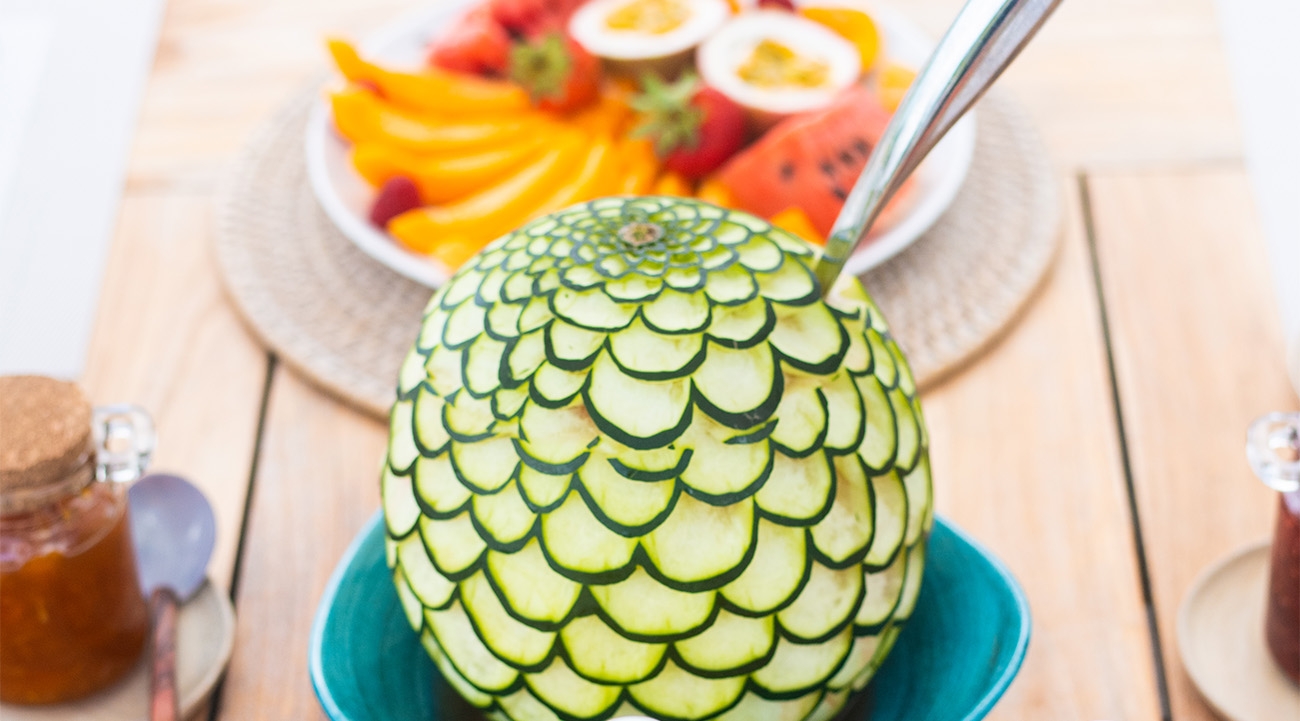
Paradise found
This is far from the only castaway-esque experience I have during my time in French Polynesia, though. Spanning roughly the size of Europe, this sprawling archipelago in the middle of the South Pacific dishes up paradise-worthy private isles in spades, and I’m here to see some of the best.
We start at Motu Nao Nao, an exclusive-hire, private island resort reached by a 40-minute speedboat ride from the bigger island of Raiatea (accessed by a short flight from Bora Bora and Tahiti).
The property opened last October with just three villas to its name, and the setting is spectacular – all white-sand shores washed with aquamarine ocean, thatched-roof villas peeping out from emerald palms and silhouetted mountains rising against a cobalt-blue sky. Local designer Alain Fleurot handcrafted the villas, and they’re an artistic masterpiece, with tree trunks strewn across the ceilings, shells covering the walls and a natural colour palette that’s perfectly in keeping with the setting.
There’s a whole roster of activities available, from fishing, sailing, paddleboarding and jetskiing to visiting pearl farms, but the standout for me was the food.
Chef Wilfred Kobylt grows about 30 edible plants here, making the island almost entirely self-sufficient; we tasted our way round the herb garden, sampling various weird-and-wonderful plants, from torch ginger, a bright-red, edible flower that tasted like sour lemongrass, to the ‘toothache plant’, so named for its anaesthetic properties (cue tingling tongue).
Then we sat down for lunch, tucking into a menu that was so aesthetically pleasing it deserved to hang in a gallery. The fare included banana leaf filled with smoked wahoo and coconut, a salad made from electric-blue flowers and a whimsically carved melon that would have made Saatchi proud – all washed down with a bright-purple elixir that was every bit as fairytale as the place itself.
Laid back luxury
It took the prospect of another private isle to tear me away from Motu Nao Nao, and Vahine Island Resort, located an hour’s speedboat ride away, was just the tonic. Set on a serene lagoon, this laid-back, rustic spot is all about ‘barefoot luxury’, with nine overwater bungalows and beachfront suites scattered across a coconut grove, a bar featuring local volcanic stone and a French-inspired restaurant enticing guests at the end of each day.
Its crowning glory, though, is La Villa Royale, an extravagant, six-suite villa that opened in 2020, decked out with handcrafted wood furnishings, local artworks and shells plucked from the shores.
A swimming pool meanders through the middle of it (complete with its own bar) and the 150-square-metre master suites are genuinely jaw-dropping – think king-sized bed raised on a wooden platform, a staircase leading to a mezzanine and a huge balcony overlooking the lagoon (guests can book the whole villa or just a room, with suites from €1,109 per night half-board). It also backs onto its own private beach, exclusive to guests staying there.
I spent my days kayaking, snorkelling and canoeing in the surrounding lagoon, in between flopping on the sand, where I never saw another soul. Diving, deep-sea fishing and naturalist-led tours are also on offer here, as well as excursions to the neighbouring isle of of Taha’a, known for its vanilla plantations and pearl farms.


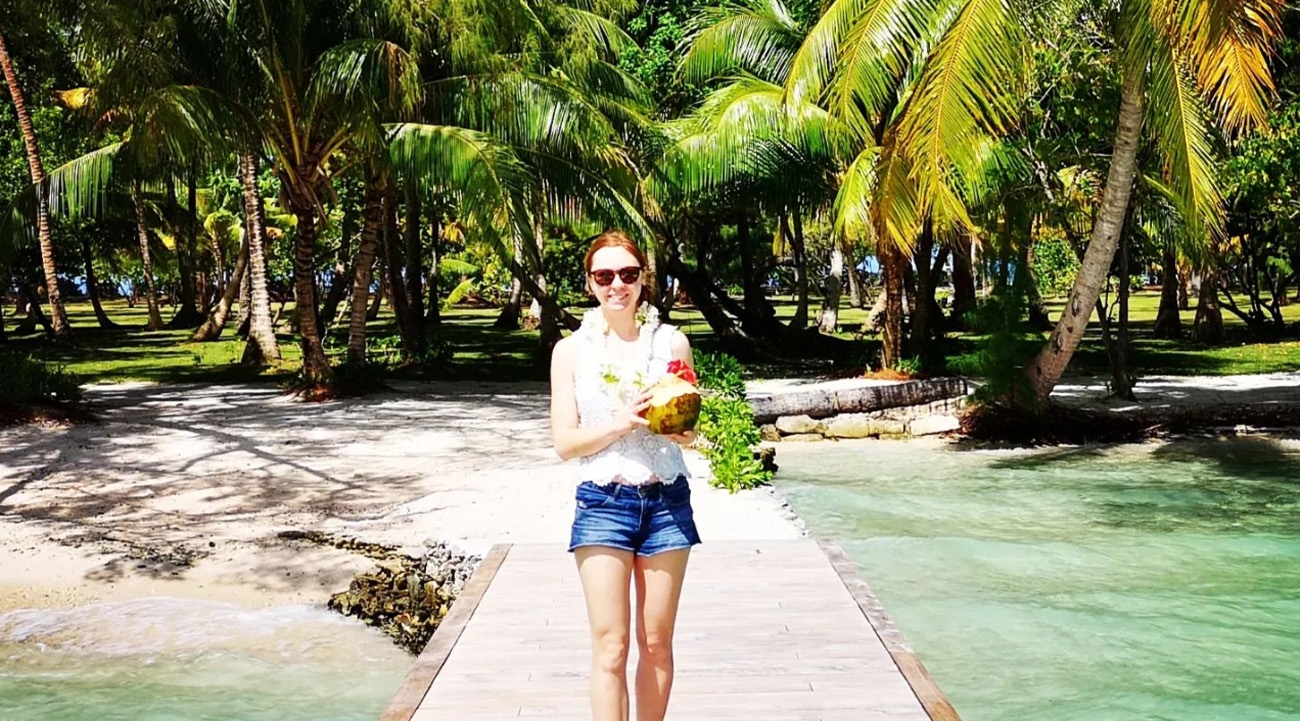
Culture meets nature
French Polynesia isn’t only about the boutiques, of course. We started our trip in Tahiti – the gateway to the archipelago’s smaller isles – which has a busier vibe and a slew of big-name resorts.
Despite the more commercial feel, there’s plenty to see on the island, with tumbling waterfalls, local villages and cultural sites scattering the interior, and mountainous landscapes luring hikers.
I visited Polynesian capital Papeete for a glimpse into local life, and it was well worth the trip, with a palm-lined waterfront and a bustling covered market among the draws.
From Tahiti, a 30-minute ferry hop took us to Moorea. Here the vibe was completely different, with a fraction of the visitors of its bigger sibling and a calm, tranquil feel aided by the setting – all vertical peaks soaring into the sky and serene lagoons the colour of curaçao. We headed out on a boat across the lagoon with Corallina Tours, and it was one of the highlights of my trip.
Within half an hour, we were docking at a sandbank frequented by stringrays and reef sharks, descending into the water to get up close and personal with these gentle giants.
It started with one ray, then two, then three. By the end, I was nigh-on surrounded, while black-tipped sharks brushed by beneath me and a turtle glided past a few metres away. It was a surreal moment, and one that completed the feeling I’d had the whole trip of being on some sort of film set. And that is exactly what brought Marlon Brando here 60 years ago.
Everything about French Polynesia is the stuff of Hollywood, and it’s not hard to see why it has inspired so many artists, writers and explorers. I might have barely scratched the surface, but I’d wager there are few places on Earth that bring culture, history and landscapes together in such an extraordinary way.
If you’ve got clients seeking a once-in-a-lifetime getaway, this enchanting archipelago deserves to be top of their list.

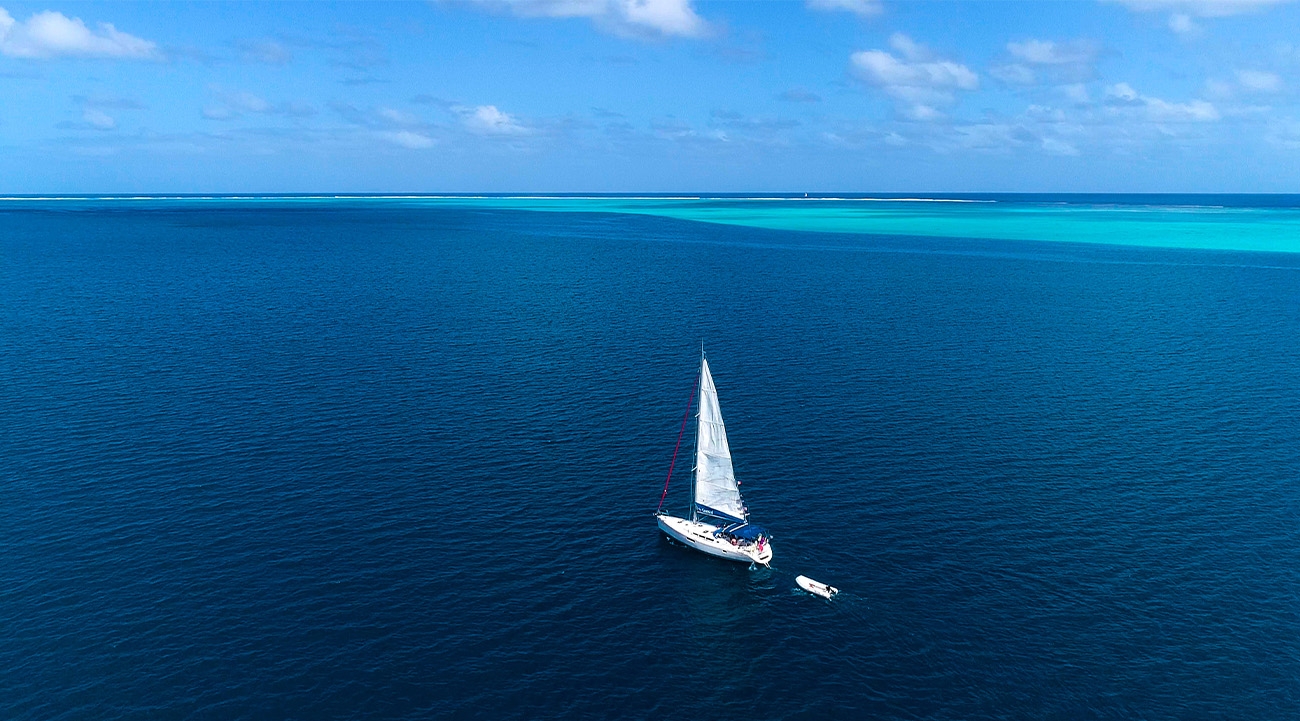
The inside track
Getting there
National carrier Air Tahiti Nui flies from Paris to Tahiti via Los Angeles, operating a Boeing 787-9 Dreamliner, with return fares from £2,016 including taxes and fees. Connecting flights with partner airlines are available from London.
airtahitinui.com/uk-en
Where to stay
For a beachfront stay in Moorea, recommend Sofitel Moorea Kia Ora Beach Resort. An all-villa resort, located on the edge of a turquoise lagoon, with garden, beach and overwater bungalows scattered across verdant grounds, it’s home to two bars, a spa and outdoor pool, plus two restaurants, with Polynesian touches aplenty. A Luxury Bungalow with Garden View starts at €466 per night.
Sofitel-moorea-kiaora.com
Sail away
French Polynesia was made for sailing, so if time allows, suggest a few nights ploughing the waters. Tahiti Yacht Charter offers catamaran cruises around the Leeward islands, including Raitea and Taha’a. Add-ons range from a visit to a pearl farm to a vanilla plantation tour. A three-night cruise combining Taha’a, Raiatea and Huahine starts from €2,000 per night in low season, including all meals.
tahitiyachtcharter.com
For more information and resources, visit: tahititourisme.uk
